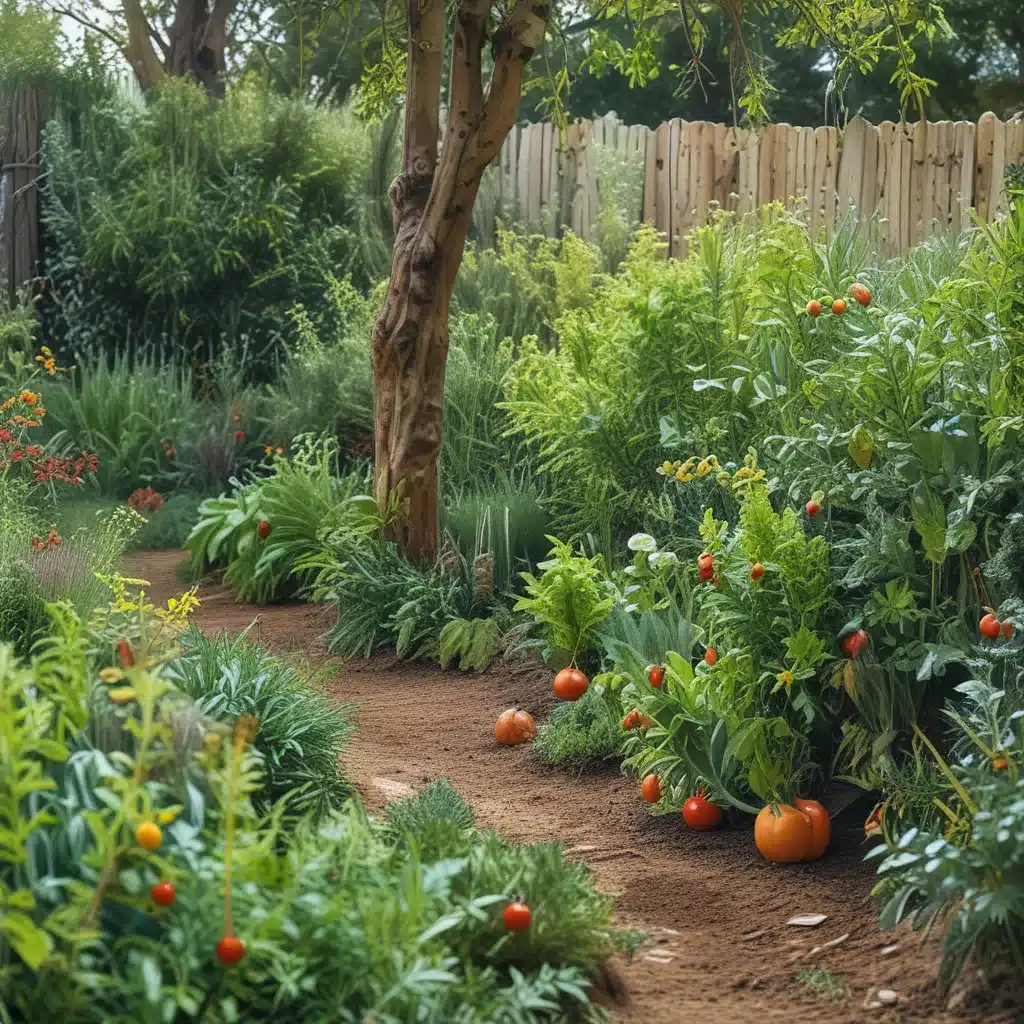The Humble Beginnings of My Backyard Oasis
In early 2008, I stumbled upon the concept of permaculture, and it was like a lightbulb went off in my head. With seven years of organic gardening experience and a degree in the biological sciences under my belt, I was intrigued. Could this revolutionary approach to designing sustainable systems really work in the real world? I had to find out for myself.
At the time, I lived in an inner-urban area, with just a regular backyard to work with. Not exactly the sprawling farmland that permaculture is often associated with. But I was determined to prove that you could create a thriving, productive food forest even in a small city space. So, I set out to design and build my very own urban oasis.
Transforming a Neglected Backyard into a Lush, Edible Ecosystem
When I first surveyed the land, it was far from the verdant paradise I envisioned. Dry, lifeless soil, encroaching lawn, and random plants scattered everywhere – this backyard was a mess. But I wasn’t deterred. I knew that with some careful planning and a whole lot of hard work, I could turn this neglected plot into a flourishing food forest.
Over the next three months, I threw myself into the project, working tirelessly through the winter to bring my design to life. I started by sheet mulching the entire area, smothering the grass and weeds with layers of cardboard, compost, and wood chips. This not only suppressed unwanted growth, but it also began building up the soil’s organic matter and fertility.
Next, I laid out the bones of my food forest – the pathways, fencing, and water systems. These permanent infrastructure elements would be the foundation upon which everything else would grow. I carefully planned the placement of each feature, knowing that they would shape the flow and function of the garden for years to come.
Assembling the Layers of a Productive Ecosystem
With the groundwork laid, it was time to start planting. But I didn’t just haphazardly throw in a random assortment of edibles. Oh no, I had a plan. Inspired by the layered structure of natural forests, I set out to create my own version of a food-producing ecosystem.
I began with the canopy layer – the fruit trees that would form the backbone of my design. After thorough research, I selected a diverse array of disease-resistant, cross-pollinating varieties that would thrive in my local climate. These towering trees would provide not only an abundance of delicious produce, but also important ecosystem services like shade and habitat.
Underneath the fruit trees, I incorporated a shrub layer of berries, currants, and other edible shrubs. These smaller plants would take advantage of the partial shade and help fill out the middle strata of the food forest. And at ground level, I established a carpet of nitrogen-fixing plants, nutrient accumulators, and low-growing herbs and vegetables.
By carefully assembling these different layers, I was creating a self-sustaining system that would mimic the natural balance and resilience of a forest. No more battling weeds, pests, or disease – this food forest would essentially take care of itself.
Measuring the Bounty of My Backyard Oasis
As the seasons passed, I watched in awe as my food forest came to life. The trees and shrubs grew vigorously, their roots reaching deep into the thriving soil. Beneficial insects and birds flocked to the diverse plantings, establishing a healthy ecological balance. And the sheer abundance of edible crops was truly astounding.
Over the course of two and a half years, I meticulously tracked and recorded every single harvest from my backyard oasis. The results were nothing short of remarkable. In my small 64-square-meter (688-square-foot) garden, I was producing the equivalent of over 12 metric tons of food per acre! That’s more than enough to feed a small family, with plenty left over to share.
| Harvest Type | Year 1 | Year 2 |
|---|---|---|
| Fruit | 67 kg | 94 kg |
| Berries | 31 kg | 42 kg |
| Vegetables | 72 kg | 75 kg |
But the true value of my food forest goes far beyond just the impressive yield numbers. This backyard oasis has become a thriving, self-sustaining ecosystem that requires minimal effort to maintain. No more battling weeds, pests, or disease – my food forest takes care of itself, just like nature intended.
Sharing the Abundance and Inspiring Others
As my food forest has matured and expanded over the years, I’ve been thrilled to share the abundance with friends, family, and the wider community. I’ve given away countless plants, berries, and produce, delighting in the idea of spreading the permaculture gospel and inspiring others to create their own edible oases.
In fact, I’ve had hundreds of people come to visit my garden on regular tours and information sessions. And the feedback has been overwhelmingly positive. Time and time again, I’ve seen the look of wonder and excitement on people’s faces as they realize the incredible potential of a small backyard space. It’s a testament to the power of permaculture design and a reminder that even in the heart of the city, we can create thriving, productive ecosystems.
So, if you’re sitting on a neglected patch of land and dreaming of a bountiful food forest, take it from me – it’s absolutely possible, even in the most unlikely of urban settings. All it takes is a little planning, a lot of elbow grease, and a deep respect for the wisdom of nature. Who knows, your backyard might just become the envy of the entire neighborhood. And wouldn’t that be a sweet harvest, indeed?
If you’re feeling inspired to create your own backyard food forest, I encourage you to dive in and get started. With a little guidance and a whole lot of passion, you can transform even the most unassuming plot into a veritable eden of edibles. Happy planting!




